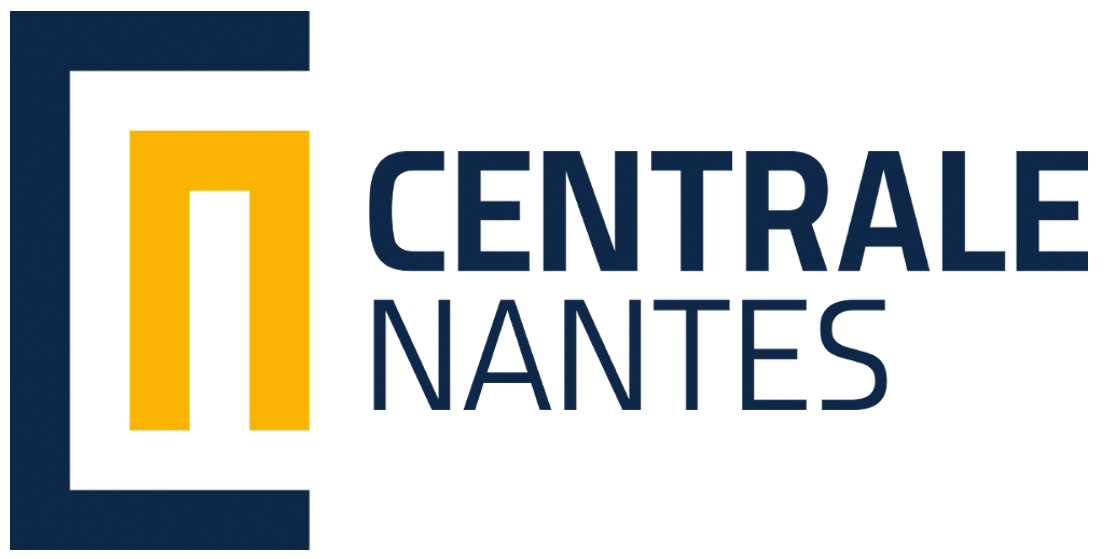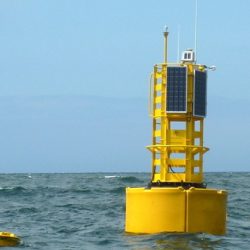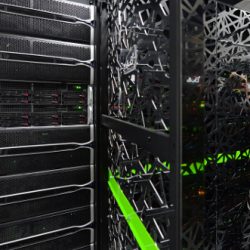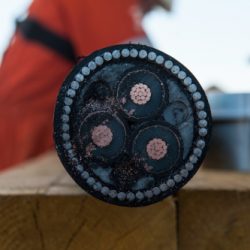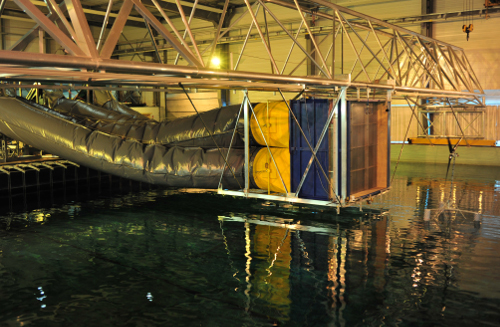
General framework of the activity
Member of the Ecoles Centrales Group, Centrale Nantes is an engineering school that deploys academic and applied research of the highest European standards
With more than 30 years of research and training in this field, European platforms in ocean engineering and several incubated startups, Centrale Nantes has established itself at the forefront of research and innovation in Marine Renewable Energy in Europe.
Centrale Nantes has created close ties with the business community through collaborative projects, joint teams, research chairs, startup incubation and creation and services from the private subsidiary Centrale Innovation.
Specific skills in the MRE field
Its CNRS laboratories, including LHEEA, ICI, GeM and LS2N, rely on complementary approaches: from digital methods (modeling software, massively parallel computation …) to experimentation on models (ocean test facilities) and at full-scale (SEM-REV offshore sea site) on various topics: offshore wind, tidal energy, wave energy, control, smart grids, material durability…
Test facilities applicable to MRE
- Ocean test facilities: Experiments carried out in the wave tanks allow different structures to be tested in their environment of use – river or sea. The structures studied range from fishing vessels, to ships, to equipment linked to marine renewable energies such as wind turbines, floating turbines, tidal turbines or wave power systems. The facilities are composed of several tanks including: a towing tank (148m x 5m, equipped with a towing carriage, which has a top speed of 8m/s) and a hydrodynamic and ocean engineering tank (50m x 30m, equipped with a segmented wave maker, composed of 48 hinged flaps which generate directional waves.)
- SEM-REV, offshore test site: SEM-REV is the first European site for multi-technology offshore testing that is connected to the network. It has all the equipment – offshore and on land – to develop, test and improve energy recovery systems (mainly from wind and wave sources).
- Supercomputer: Intensive numerical calculation is an indispensable tool for both research and industry: it reduces the cost of testing, facilitates optimization and promotes creativity and the search for new solutions. Centrale Nantes is the only higher education establishment in France to have such a powerful supercomputer which is open to different users.
- Composites platform: The experimental equipment, installed on the Centrale Nantes campus, makes it possible to produce organic composites and to characterize materials in physical terms.
Products or services in MRE
The LHEEA (Research Laboratory in Hydrodynamics, Energy and Atmospheric Environment) conducts research in hydrodynamics, on the development of marine renewable energies: offshore wind, floating offshore wind, tidal energy, wave energy…
The ICI (Intensive Computing Institute) manages the parallel scalar BULLx supercomputer, the third most powerful supercomputer at the regional level in the Tier-2 * class.
The research of the LS2N relates to the study of the mechanisms of communication and control in machines, organizational systems and living beings.
Projects in MRE
- European projects: Marina Platform, MARINET 1 et 2, FLOATGEN, FORESEA
- National projects: FONDEOLE (Région Pays de la Loire), EMODI (ANR), VALEF (France Energies Marines), HYSMAR (IRT Jules Verne)
- Joint Laboratory of Marine Technology (Centrale Nantes/Université de Nantes/DCNS), RTE/Centrale Nantes Chair on smart grids, Bureau Veritas/Centrale Nantes Chair on Ships of the future.
WEAMEC project :
Training in the MRE field
As part of the general engineering programme at Centrale Nantes, several options in the second and third year allow engineers to train on topics related to MRE:
- Ocean specialisation
- Energy production and management specialisation
- Embedded control and power grids
- High performance computing in engineering science specialisation
Read more about Centrale Nantes Ingineering Programme
Centrale Nantes also offers 3 masters linked to marine renewable energies:
- Master in marine and ocean engineering, “Hydrodynamics for Ocean Engineering”
- Master EMSHIP Advanced Design (Erasmus Mundus)
- Master AMASONE, Atlantic MAster on Ship Operation and Naval Engineering
Centrale Nantes coordinates with Nantes University the WEAMEC vocational training on MRE :
